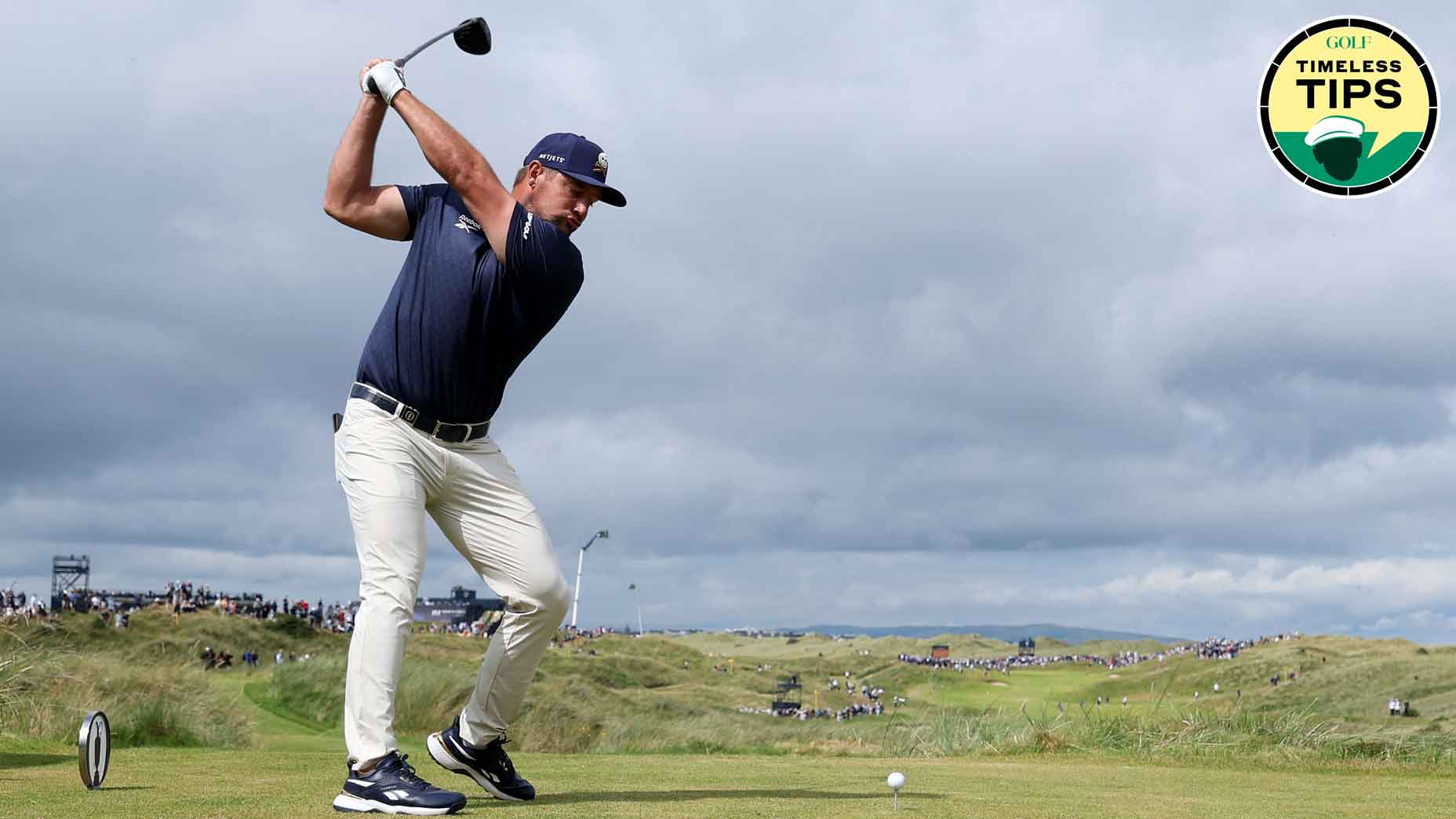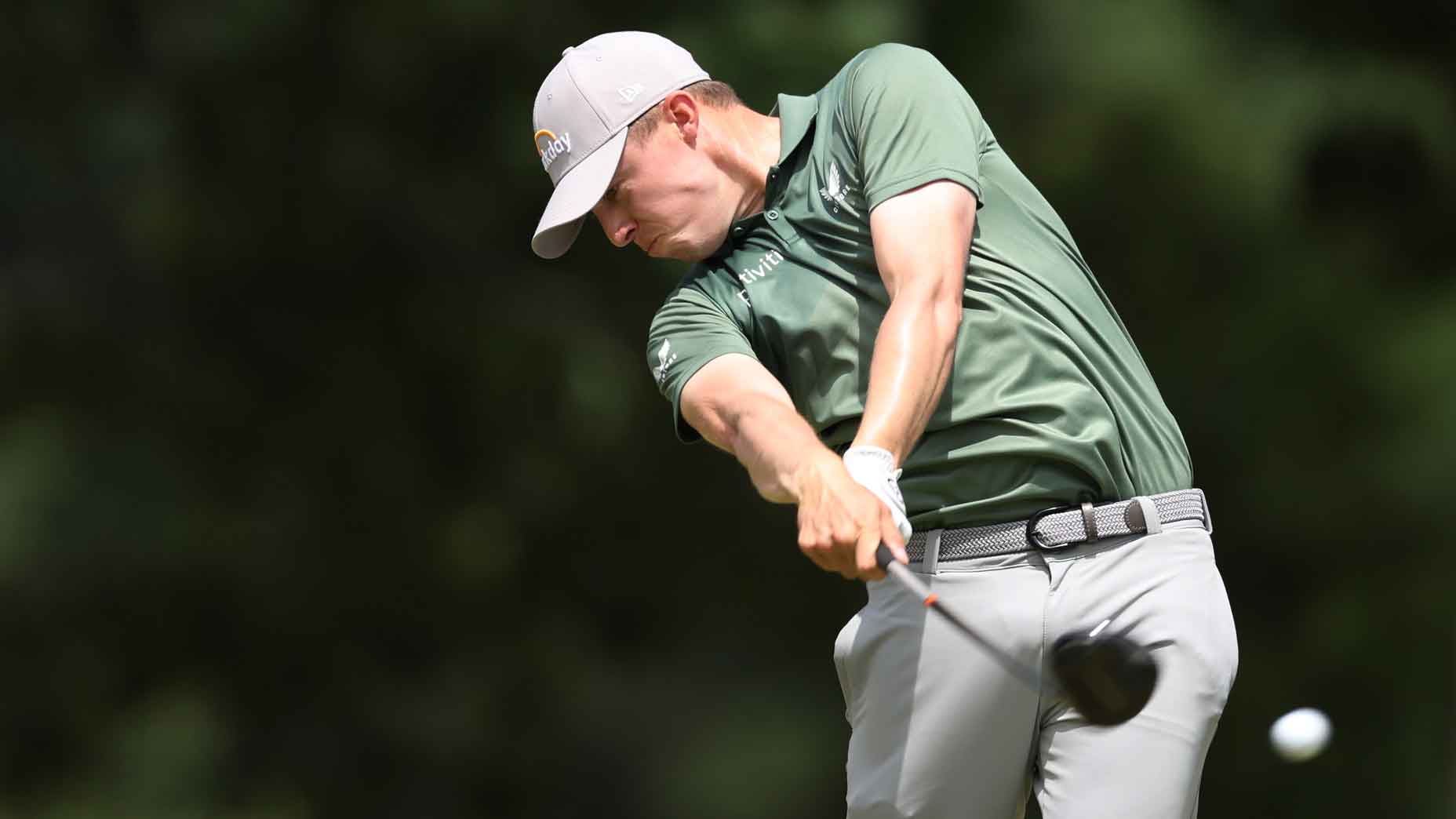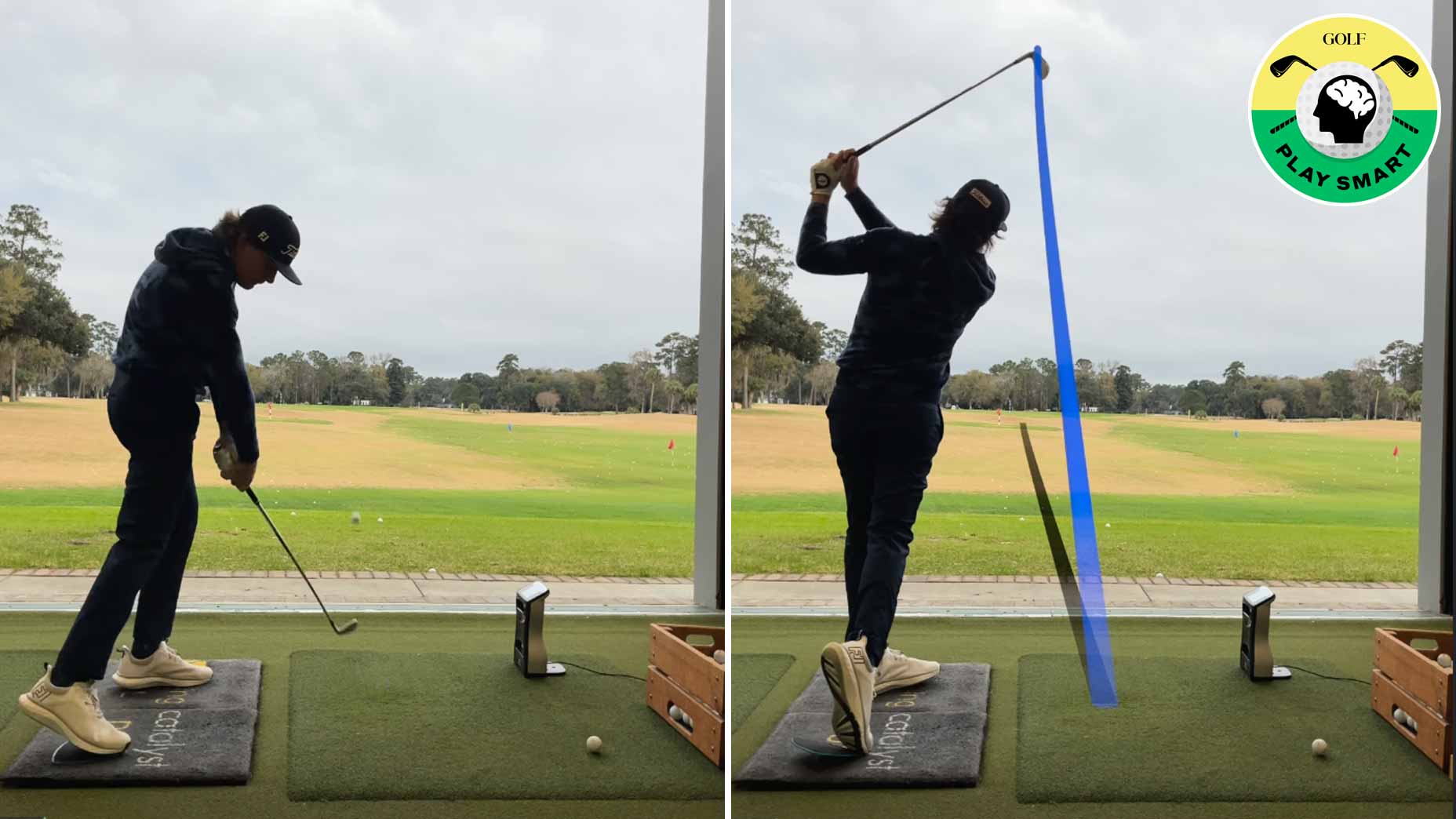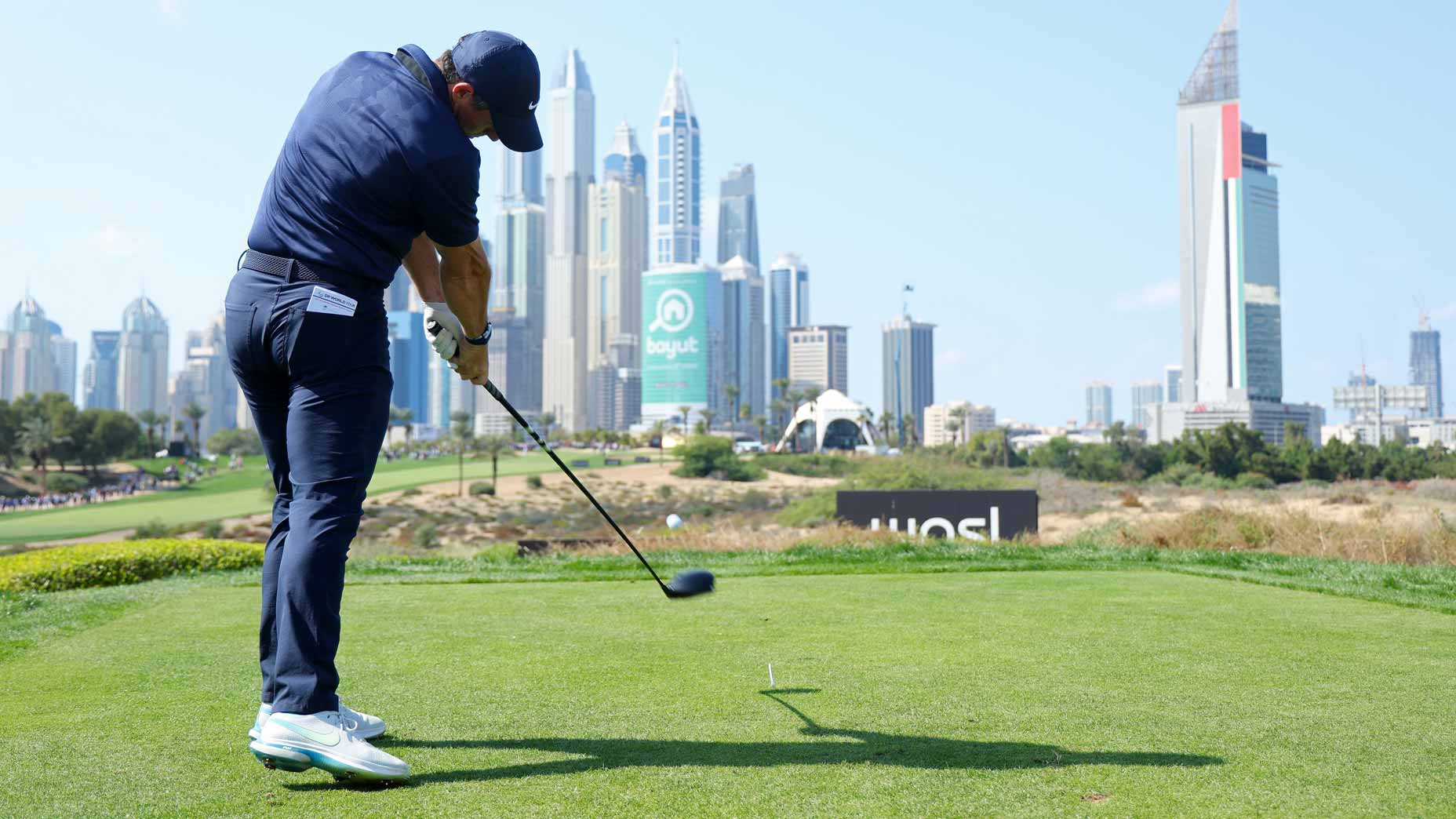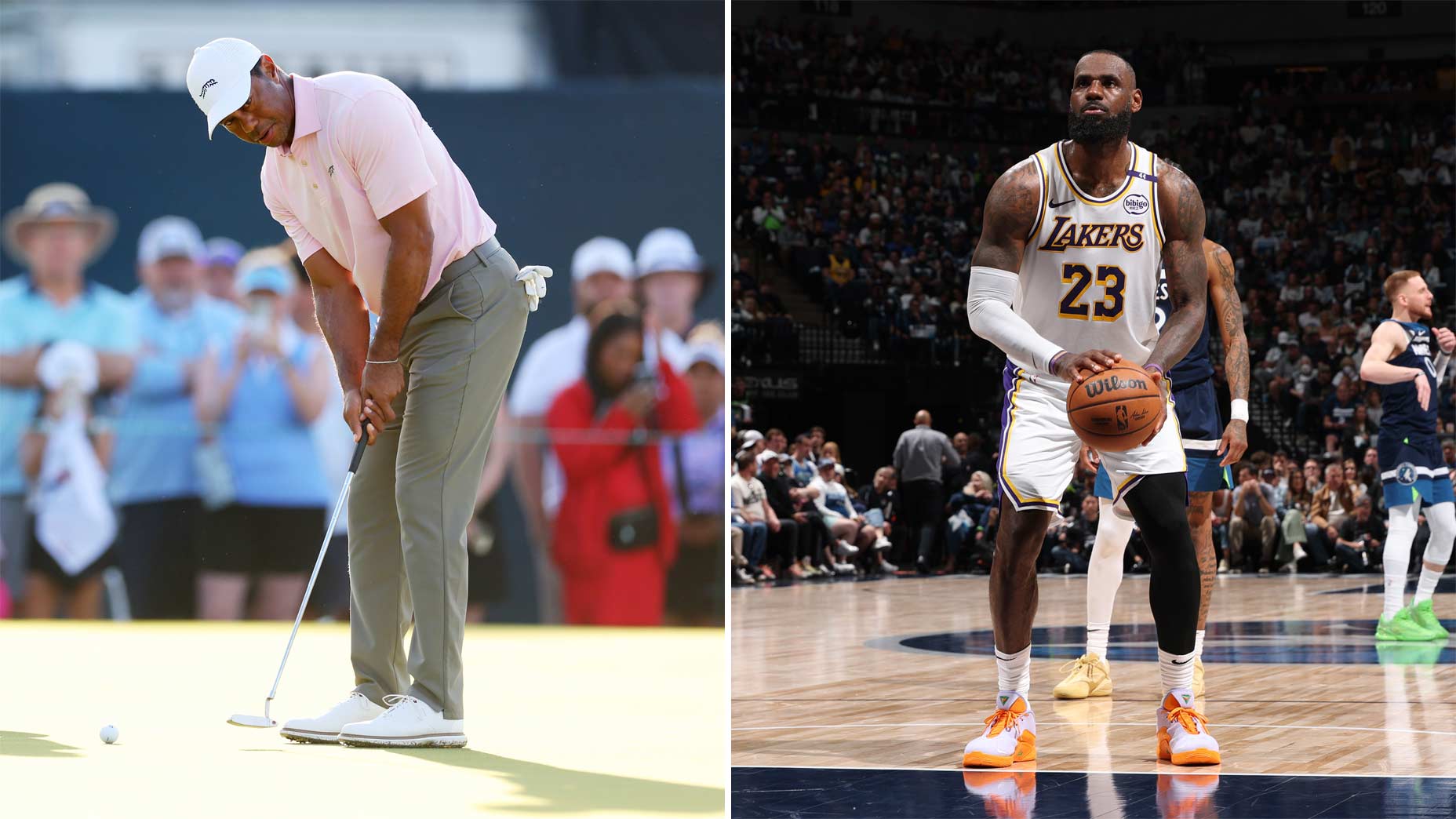Golf instruction is ever-evolving, but the best advice stands the test of time. In GOLF.com’s new series, Timeless Tips, we’re highlighting some of the greatest advice teachers and players have dispensed in the pages of GOLF Magazine. Today we look back to an article about how hard you should swing the club from our August 1982 issue.
Power off the tee is a weapon in the modern game. If you can belt the ball off the tee, you’re at a distinct advantage over your competitors.
Power has always been an asset, but advanced analytics have only in the last decade started to illustrate just how much of an advantage it really is. Simply put: it’s huge.
But while power is perhaps the most sought-after skill in the game, does that mean you should be trying to swing the club hard? Back in the early 80s, we posed that question in the pages of GOLF Magazine — and got some input from the top teachers in the game.
Check it out below.
How hard should you try to swing?
Swinging and/or hitting hard has long been an element of championship golf. Back in the 1850s, Willie Dunn Sr. smashed the gutta percha ball for long distances over the fairways of Britain. James Braid, who along with Harry Vardon and J.H. Taylor, dominated golf from 1894 to 1914, was known for his long drives, consistently in excess of 300 yards, resulting from a swing with “divine fury.”
Then came Craig Wood, Lawson Little and Jimmy Thompson in the 1930s, Snead and Hogan in the 1940s — and George Bayer in the 1950s, all of whom were known to some degree for their ability to hit the ball hard.
Palmer and Nicklaus followed in the hard hitters’ footsteps, leading the wave of today’s long hitters, players like Masters champion Craig Stadler and Dan Pohl, who in 1981 drove an average of 280 yards.
But despite the long and distinguished history of hard hitting and the fact that hitting the ball hard is one of the great pleasures of the game, the average golfer is constantly instructed to swing “nice and easy” or to take plenty of club and “hit it smoothly.” Let the weekend player take a good rip at a tee shot and a member of his group is almost sure to say, “Geez, you’re swinging too hard!”
3 huge swing mistakes costing you power off the tee, according to dataBy: Zephyr Melton
Since the touring professionals are seen as the standard for excellence, the level of play that all golfers aspire to, isn’t it a good idea for the average golfer to follow the pros’ lead and take a bigger, harder swing at the ball?
“There is definitely an advantage to being able to swing hard and efficiently,” says GOLF Magazine Teaching Editor Dick Farley. “But there is a vast difference between the average country club player and the Tour pro, who has a grooved swing that is on-plane throughout. He is able to retain his power until just before impact, whereas the amateur, when attempting to swing hard, goes off plane and releases this power too early, resulting in nothing but unproductive motion.”
And overall, Farley and GOLF Magazine’s other Teaching Editors (Paul Bertholy, John Jacobs, Eddie Merrins, Harry Obitz and Harvey Penick) agree that the average golfer’s problem is not lack of swing speed, but an inability to apply the speed he has efficiently to the ball.
“The majority of golfers I see should not be working on swinging harder,” says teacher and European Ryder Cup captain John Jacobs. “They should be working on creating the proper impact, that is, swinging the clubhead into the back of the ball with the face square.”
At his schools, Jacobs often makes this point with a demonstration. He asks the students what makes the ball fly far, and inevitably someone says, “Clubhead speed.” Jacobs then takes a 7-iron, opens the clubface wide and takes a vicious cut at a ball, resulting in a shot that is popped up weakly to the right. He then squares the clubface and swinging much slower, contacts the ball squarely and hits the shot at least twice as far.
7 tips for bombing long tee shots like the prosBy: Kellie Stenzel, Top 100 Teacher
“A golfer’s full natural whack, or full natural power, will provide plenty of clubhead speed,” explains Jacobs. “I see very, very few golfers who don’t have enough speed. But I see quite a few who have the face open at impact or who are swinging the clubhead across the ball from out to in.”
Eddie Merrins agrees. “Poorer players almost always think in terms of swinging the club up and down. This transmits the clubhead speed they do create into the ground. When you swing the club around the body you transmit the speed of the swing into the ball and forward. If there is a ‘secret’ to how far a Craig Stadler or a Dan Pohl can hit the ball, it’s not how fast they swing but how well they deliver the speed they create to the ball.”
When the average golfer tries to create more speed in his swing, he is subject to a number of swing faults. According to Merrins, the term clubhead speed itself can lead to a fault. “It’s the emphasis on the clubhead that results in the kind of up and down swing seen in so many amateurs.
“In a good golf swing it is the shaft of the club, not the clubhead, that is being accelerated. The clubhead is in a passive state, which makes it less prone to manipulation. So actually, the more you can key on accelerating the shaft of the club, the more accurate you will be.”
Another common fault associated with attempting to swing harder is an overly tight grip. “Naturally, you’re going to hold the club tighter when you make an effort to swing harder,” says Farley. “On those occasions when swinging harder is indicated, such as a poor lie in the rough or in a bunker, a tighter grip is necessary to maintain control of the club. But swinging harder generally also leads to a tight grip and that can be a problem when you want distance from the tee or fairway.
“For distance you must swing the club faster, not harder, and to do that you must grip the club as lightly as possible.”
Farley points out the difference between swinging fast and swinging hard. “To me,” he says, “a hard swing is what you use from rough or sand. It involves more muscular effort. But a fast swing requires quick strength, and you create speed by using your muscles freely.
“Let’s look at a runner for a parallel. If he were running through hip deep water, he would have to tighten his muscles and use more effort. That compares to what I think of as a hard swing. But if he were running the 100-yard dash, he would want the muscles in his legs to be relaxed and free, and the freer they were the faster he’d run. So you can see that an overly tight grip is actually counterproductive to hitting the ball farther.”
Paul Bertholy believes that misplaced speed is the villain. “When the average golfer tries to swing hard he invariably swings faster during the takeaway and at the beginning of the downswing. The result is that all of the energy of the swing is released before the clubhead reaches the ball, so that the clubhead is actually decelerating at impact. It all goes back to that old saw, ‘You don’t hit it with your backswing.
“The right place to create speed is when the hands are between shoulder and hip height on the downswing. If you can swing the club back slowly and start down slowly by shifting the hips to the left, you can then swing the club through the hitting area as fast and freely as you wish. The point is to swing hard at the right time.”
This pro’s sneaky power move will help you bomb longer drivesBy: Zephyr Melton
Upon hearing of all of the possible swing faults that can stem from swinging hard, you might wonder how Palmer and Nicklaus and the other players who learned to slug the ball from the beginning avoided these maladies.
“Both Palmer and Nicklaus had excellent teachers monitoring every step of their development,” explains Farley. “You can be sure that they both had solid fundamentals as the basis for hitting the ball hard. And there’s also the fact that they learned to play that way as youngsters. By the time they were in their late teens, hitting hard was second nature to them.”
Harry Obitz agrees. “You’ve got to have a sound golf swing first. Without it, trying to hit harder only magnifies your errors. The better you understand and can perform the fundamental movements of the swing, the harder or faster you can swing without losing control of the club.
“A weekend golfer, who perhaps took up the game late in life and plays perhaps six or eight times a month, should not expect to be able to make the same kind of forceful swing used by a Tour pro who is playing and practicing daily.”
Although each of the Teaching Editors had his own ideas on the possible problems that could arise from swinging harder, they all agreed on one point: Each individual has an inherent swing speed and deviating from it, either faster or slower, is an invitation to trouble.
“Everyone has to find their own best tempo,” explains Harvey Penick. “And you should be aware that hitting too easily can be as big a problem as hitting too hard, although it’s much more common for average players to swing too hard, or as I call it, play outside themselves.”
Jacobs adds, “Trying to control the natural speed of your swing, slower or faster, is another needless worry. You should swing the club as fast as you do naturally, the speed with which you maintain control of the club and create maximum speed at impact.”
A look at two Tour players will support this observation. Lanny Wadkins, for example, does things quickly naturally, and he swings fast as well. By contrast, Bob Murphy does things at a slower pace. The tempo of their swings reflect their respective personalities.
“Each person has his own physical makeup as well,” Obitz says. “Someone with very elastic muscles will naturally swing the club faster than someone with tight muscles.”
“And large people will tend to swing the club more slowly than small people,” Jacobs adds.
Jacobs maintains that every golfer “has a definite point, depending upon natural muscularity, coordination and playing experience, where he can equate speed with control. He should find it, then play within it if the score is more important than the exercise.”
Despite the fact that Stadler and Pohl, among others, often appear to be swinging out of their shoes, Jacobs maintains, “You will never meet a top tournament golfer who swings as hard as he could physically, other than in exceptional circumstances for an occasional recovery shot.”
How can you determine your best swing speed? Practice. “Note the speed you employ on your best shots and try to repeat it,” says Penick. “If you think you can swing faster, do so and note the point at which your shots become erratic and you begin to lose your balance. That’s a sure way to tell that you’re swinging too hard.”
Obitz suggests that golfers who want to increase their potential for speed swing a weighted club. To sum up, swing speed is an element that most golfers already have in abundance. The key is to make the most of what you have.
